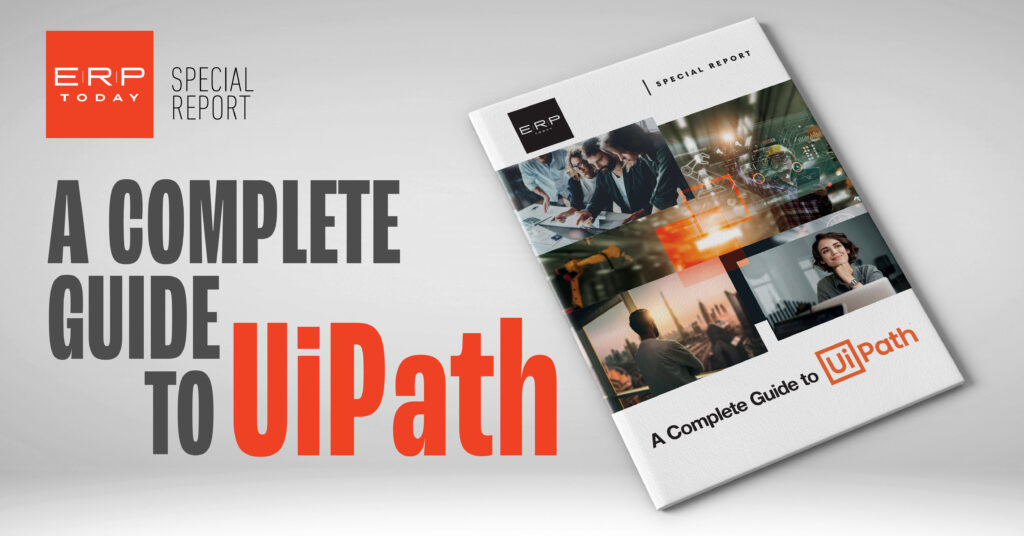Software evolves. By its core nature, software is inherently subject to iteration, augmentation and extension. The onward development of any software application, component, suite or platform is a process of dynamic forward-looking evolution as one generation or version release typically builds on top of the previous one.
Often as a result of changing user needs, requirements and expectations, occasionally driven by a change in hardware form factors and sometimes driven by governance factors and wider market issues, software evolves all the time.
A new pace of evolution
Over the last half-century or so, platform-level technologies have evolved impressively, but at a relatively consistent pace. Across the business-to-business software market, the cadence of innovation and development in enterprise resource planning does not differ markedly from that seen in customer relationship management, field sales management or perhaps supply chain management.
In the face of that more ‘standard’ cycle of development stands enterprise automation fuelled by a perfect storm of robotic process automation, cloud computing maturity, a quantum leap in artificial intelligence and machine learning and a holistically embraced approach to data-driven business witnessed across every industry vertical, enterprise automation is both of the time and of the moment.
As both a platform pioneer and a maverick mover in the market, UiPath has come to the fore with an approach to enterprise automation innovation that has left would-be players in this market scratching their heads. In something of a made-for-Hollywood tale of tech inspiration and innovation, the company was founded back in 2005 in Bucharest, Romania, by Daniel Dines and Marius Tîrcă.
Now with headquarters across Europe, the Americas and Asia-Pac, UiPath was ranked by the Financial Times in 2020 as one of America’s fastest-growing companies and the organisation continues to gain plaudits in areas such as the Forbes Cloud 100 list and beyond. Staying true to its roots and keeping an expanded research and development facility in Romania, today UiPath is pushing the boundaries for enterprise automation not just into automation, but higher and wider into hyperautomation, or to afford this concept its hashtag, this is #beyondRPA.
In terms of operational mechanics, hyperautomation describes UiPath’s vision for software robots implemented around functions spanning task mining, process mining, test automation, document understanding, human-in-the-loop, UiPath apps and all enabled and enhanced by the use of the UiPath Assistant.
From screen scraping to semantics
Starting from its early beginnings in screen scraping technology back in 2005, UiPath spent much of its first half-decade developing a platform for user interface (UI) automation functions, which surfaced in full during 2013. Studio Orchestrator Robots followed in 2017, a technology built to oversee the life of unattended autonomous robots that don’t require human supervision to execute jobs. Orchestrator is the central hub for unattended automation as it allows launching unattended execution on the spot, or by setting it up in a preplanned manner with triggers.
By expanding the UiPath platform with 2018-2019 developments including optical character recognition, AI computer vision and the UiPath AI Center, the company has elevated its overall technology proposition in an ever-evolving cycle. Across 2019-2020, UiPath augmented its platform with additional process mining capabilities and the UiPath StudioX Assistant, a set of functions designed to offer simplified coding that allows workers to build their own robots to simplify their own workflows.
During this time, the company also added UiPath Document Understanding, software that extracts, interprets and processes data from PDFs, images, handwriting and other communication mining. There’s also, UiPath communications cining, a technology which provides context and AI decision-making to customer communications and workflows, such as emails, chat sessions and audio.
Coming full circle to 2022 into the era of enterprise automation, UiPath has expanded upon its mission to enable a robot for every person through the development of major technology breakthroughs, such as semantic automation, where robots are able to deal with interfaces and documents more like a human, with a higher level of understanding. As we stand today, UiPath is now more than an automation solution or an RPA toolkit – the company now presents a fully-fledged business automation platform.
UiPath is pushing the boundaries for enterprise automation not just into automation, but higher and wider into hyperautomation
With citizen development and low-code software approaches guaranteed to form key functions in the UiPath of 2022 and beyond, the company is now also working to expand its communications mining prowess. Tracing its developmental DNA back to task mining and process mining, UiPath explains communications mining as unstructured communications analysis carried out to find data points that enable automation opportunities which ultimately become workflow accelerators.
The fully automated enterprise
Tomorrow is always an interesting day for UiPath, a truth that the business consistently attests to. The company has moved to consolidate technologies and toolsets from perhaps half a dozen IT disciplines, all for the better. Customers are reporting returns of thousands and millions of US dollars and the firm anticipates having billion-dollar-value return on investment conversations in the near future.
Now committed to continue evolving, UiPath has pledged to further widen its approach to helping organisations in every industry to reduce the treadmill of growing applications that they need to maintain, manage and operate every year. While not everything is yet a certainty in the modern age of digital business, automation always reduces the corporate workload, so its place in the modern IT stack is guaranteed.
As co-CEO Daniel Dines has stated openly, on the journey to the fully automated enterprise, the future of work is still very much people-centric, creative, social. Perhaps most of all – and with the shadow of the last three years of disruption perhaps now clearing – the future of work is all about being able to cope with change and the unexpected on a human level, robots included.




